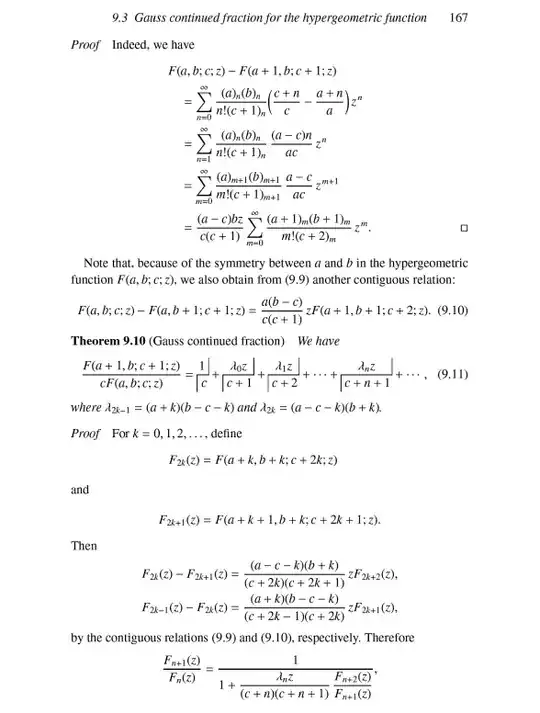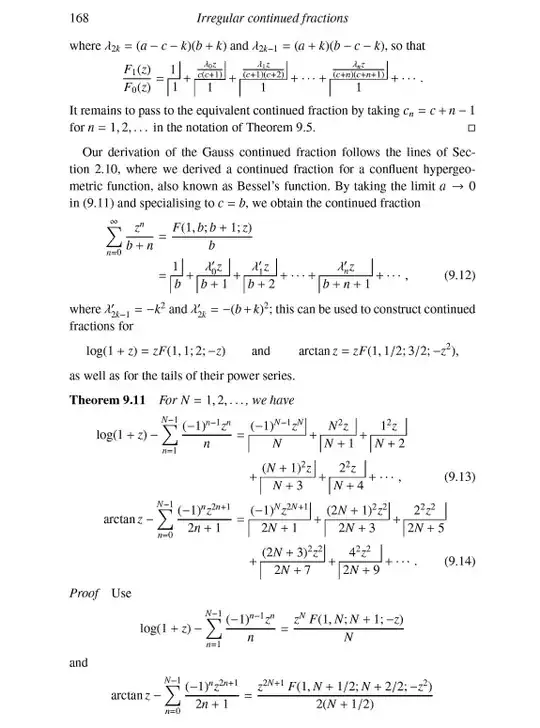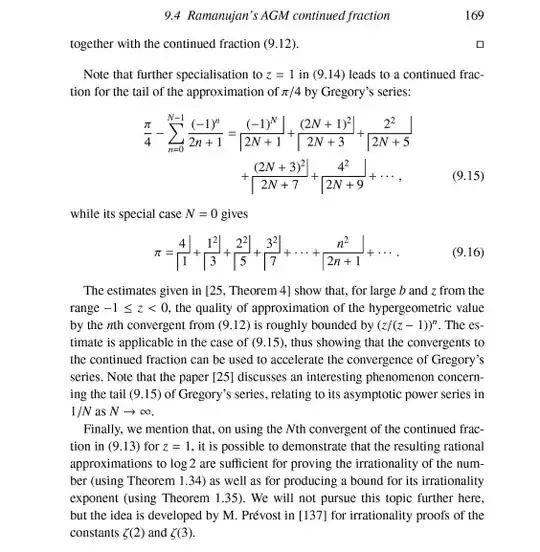These continued fractions for $\pi$ were given here,
$$\small \pi = \cfrac{4} {1+\cfrac{1^2} {2+\cfrac{3^2} {2+\cfrac{5^2} {2+\ddots}}}} = \sum_{n=0}^\infty \frac{4(-1)^n}{2n+1} = \frac{4}{1} - \frac{4}{3} + \frac{4}{5} - \frac{4}{7} + \cdots\tag1 $$
$$\small \pi = 3 + \cfrac{1^2} {6+\cfrac{3^2} {6+\cfrac{5^2} {6+\ddots}}} = 3 - \sum_{n=1}^\infty \frac{(-1)^n} {n (n+1) (2n+1)} = 3 + \frac{1}{1\cdot 2\cdot 3} - \frac{1}{2\cdot 3\cdot 5} + \frac{1}{3\cdot 4\cdot 7} - \cdots\tag2 $$
$$\small \pi = \cfrac{4} {1+\cfrac{1^2} {3+\cfrac{2^2} {5+\cfrac{3^2} {7+\ddots}}}} = 4 - 1 + \frac{1}{6} - \frac{1}{34} + \frac {16}{3145} - \frac{4}{4551} + \frac{1}{6601} - \frac{1}{38341} + \cdots\tag3$$
Unfortunately, the third one didn't include a closed-form for the series. (I tried the OEIS using the denominators, but no hits.)
Q. What's the series formula for $(3)$?


